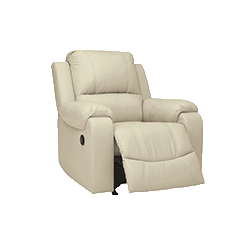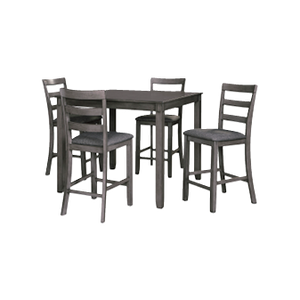Plants have become an essential element in modern home decor, bringing life, colour, and a touch of nature indoors. Whether you have a green thumb or are just beginning your plant journey, incorporating plants into your living space can transform it into a tranquil oasis. From choosing the right plants to styling them in a visually appealing way, here are some tips to help you create a harmonious blend of furniture and foliage.
Tips for Decorating with Plants
Choosing the Right Plants for Your Home Decor
The first step to successful plant decoration is selecting the right plants that suit your home environment and personal style. Here are a few factors to consider when choosing plants for your space:
Lighting Conditions
Assess the lighting in each room to determine the amount of natural light available. Some plants thrive in bright, direct sunlight, while others prefer low-light environments. Opt for plants that match the lighting conditions of each room to ensure their healthy growth.
Maintenance Level
Consider your lifestyle and commitment to plant care. If you have a busy schedule or are new to plant care, start with low-maintenance varieties such as snake plants, pothos, or succulents. If you have more time and experience, you can experiment with plants that require more attention, such as ferns or orchids.
Space Availability
Take into account the size of your space and the growth habits of the plants. Tall, leafy plants like fiddle leaf figs or monstera deliciosas make a statement in spacious rooms, while smaller plants like herbs or cacti fit well in compact spaces or windowsills.
Aesthetics
Consider the overall style and colour scheme of your home decor. Some plants have vibrant flowers, while others showcase beautiful foliage. Choose plants that complement your existing furniture and add a visually appealing element to your space.
Tips for Stylishly Incorporating Greenery
Once you've chosen the perfect plants for your home, it's time to bring them to life and create a cohesive and stylish display. Here are some tips for incorporating greenery into your home decor:
Grouping and Layering
Create visual interest by grouping plants together and varying their heights. Combine plants of different sizes, textures, and colours to add depth and dimension to your space. Place them on shelves, side tables, or even hanging from the ceiling to create layers of greenery.
Choose the Right Containers
Select containers that not only suit your plants' needs but also complement your interior style. Consider using a mix of materials like ceramic, terracotta, or woven baskets to add texture and personality. Play with different sizes and shapes to create an eclectic and visually appealing arrangement.
Utilize Vertical Space
Don't limit yourself to horizontal surfaces. Utilize vertical space by installing floating shelves, plant hangers, or wall-mounted planters. This not only saves floor space but also adds a unique and eye-catching element to your decor.
Create Focal Points
Use plants as focal points in your room by placing them in strategic locations. A large, statement plant can become the centerpiece of a living room or entryway, drawing attention and adding a fresh burst of greenery.
Maintaining Healthy and Vibrant Indoor Plants
To ensure your indoor plants stay healthy and vibrant, it's crucial to provide them with proper care and maintenance. Here are a few essential tips to keep your plants thriving:
Watering
Understand the watering needs of each plant species. Overwatering or underwatering can lead to root rot or dehydration. Check the moisture levels of the soil regularly and adjust your watering schedule accordingly.
Lighting
Position your plants in areas that provide the ideal amount of light for their specific needs. Monitor the amount of sunlight they receive and make adjustments as necessary. Rotate your plants periodically to ensure all sides receive adequate light and prevent them from leaning towards the light source.
Temperature and Humidity
Different plants thrive in different temperature and humidity levels. Research the preferred conditions for your plants and try to replicate them as closely as possible. Avoid placing plants near drafts or extreme temperature changes, as it can stress them.
Fertilizing
Provide your plants with the necessary nutrients by fertilizing them regularly. Use a balanced, water-soluble fertilizer suitable for indoor plants and follow the recommended dosage instructions. Be cautious not to over-fertilize, as it can damage the roots.
Pruning and Grooming
Regularly prune your plants to remove dead or yellowing leaves, encourage new growth, and maintain their shape. Grooming also involves dusting the leaves to keep them clean and free from pests. Wipe the leaves gently with a damp cloth or mist them to remove dust buildup.
Pest Control
Keep a watchful eye for signs of pests such as mealybugs, spider mites, or aphids. If you notice any infestation, treat it promptly using natural or organic pest control methods, or consult a professional if necessary.
Monitor Plant Health
Observe your plants closely for any signs of stress, discoloration, or wilting. Address any issues promptly by adjusting their care routine, repotting if needed, or seeking advice from a plant expert.
Remember, each plant is unique and may have specific care requirements, so it's important to do your research and provide individualized attention to ensure their well-being.
By following these tips for choosing, styling, and maintaining indoor plants, you can enhance the beauty of your home decor while creating a calming and inviting atmosphere. The combination of furniture from Ashley and the vibrant touch of greenery will transform your space into a haven of natural elegance.






















